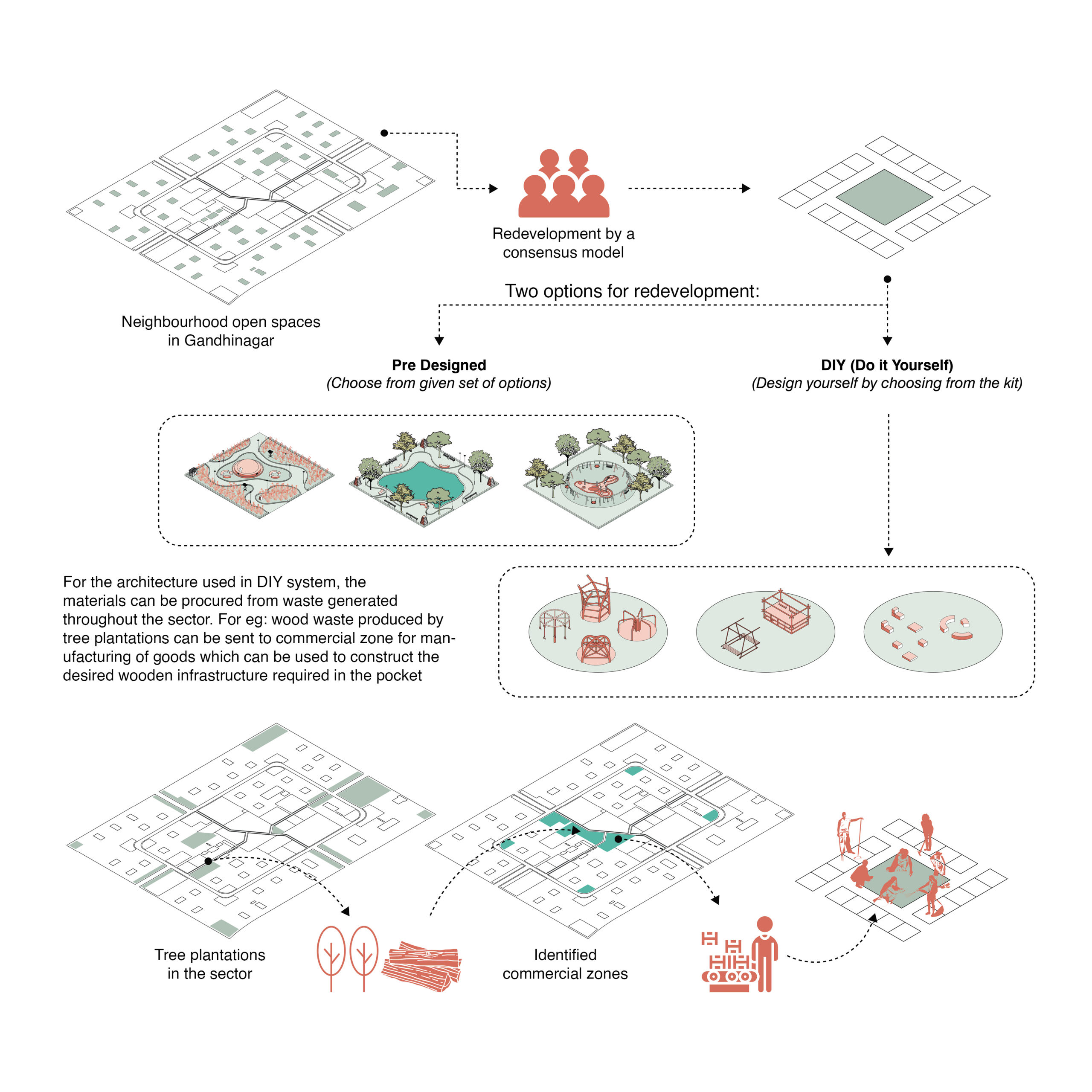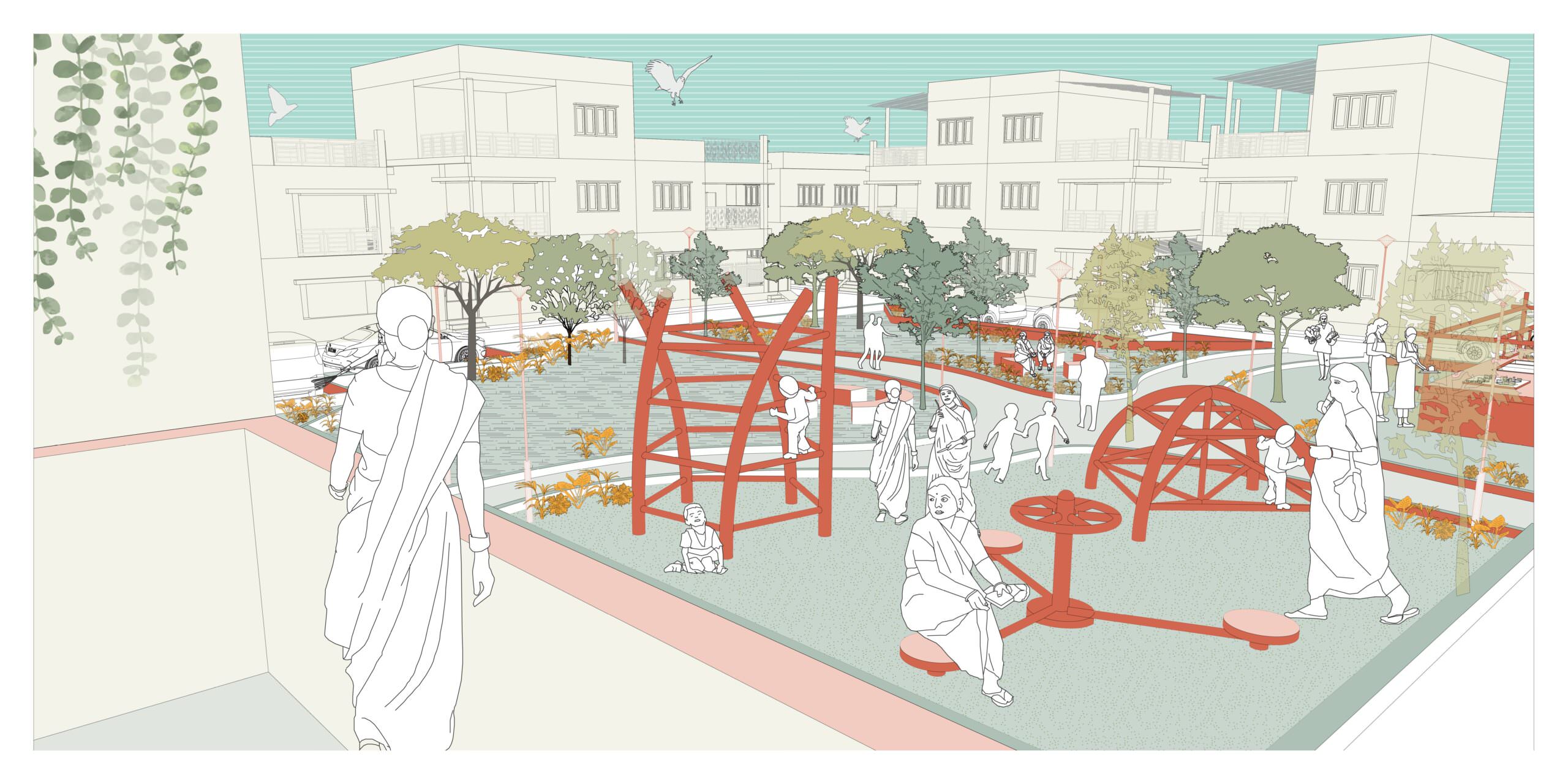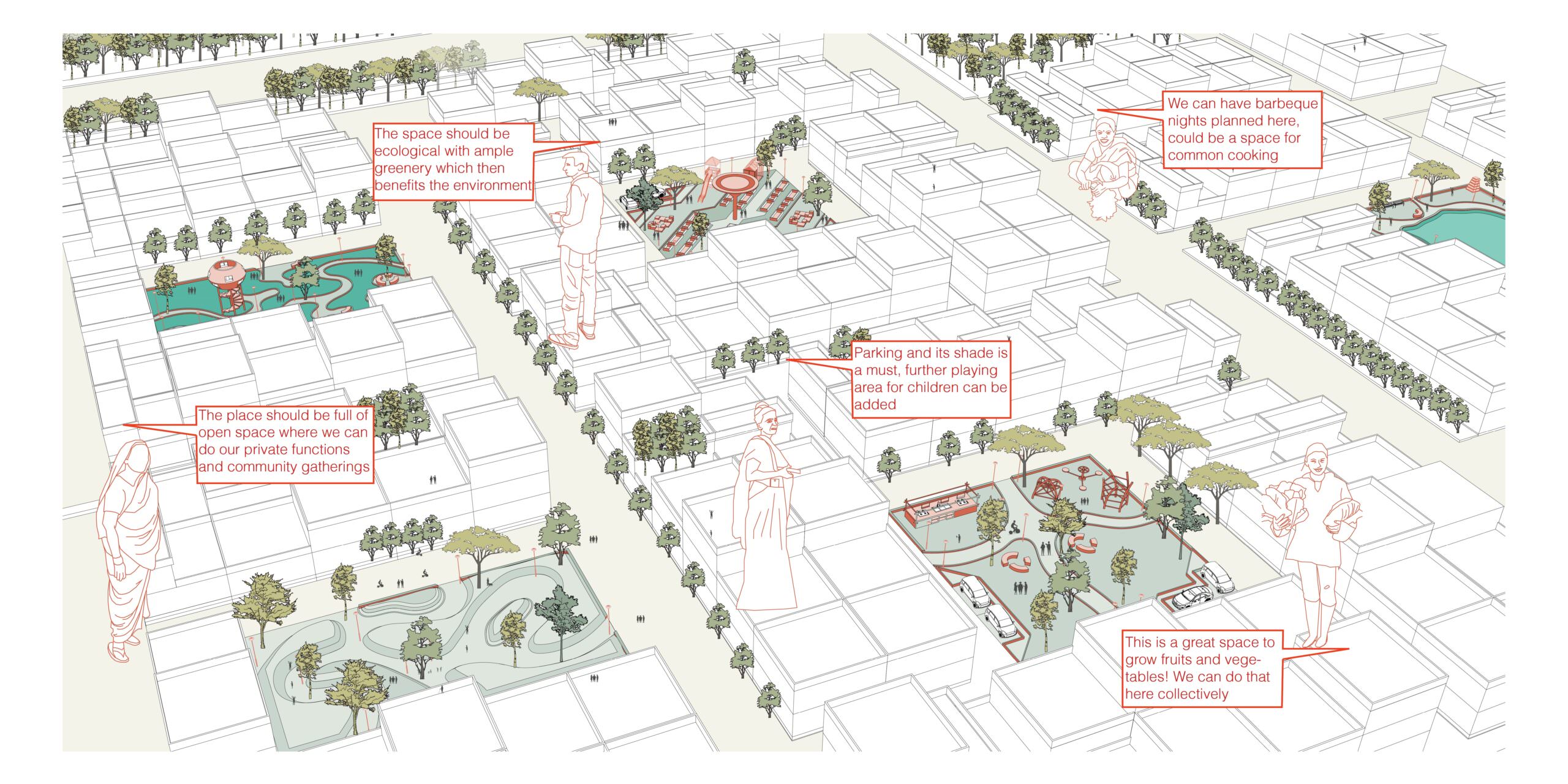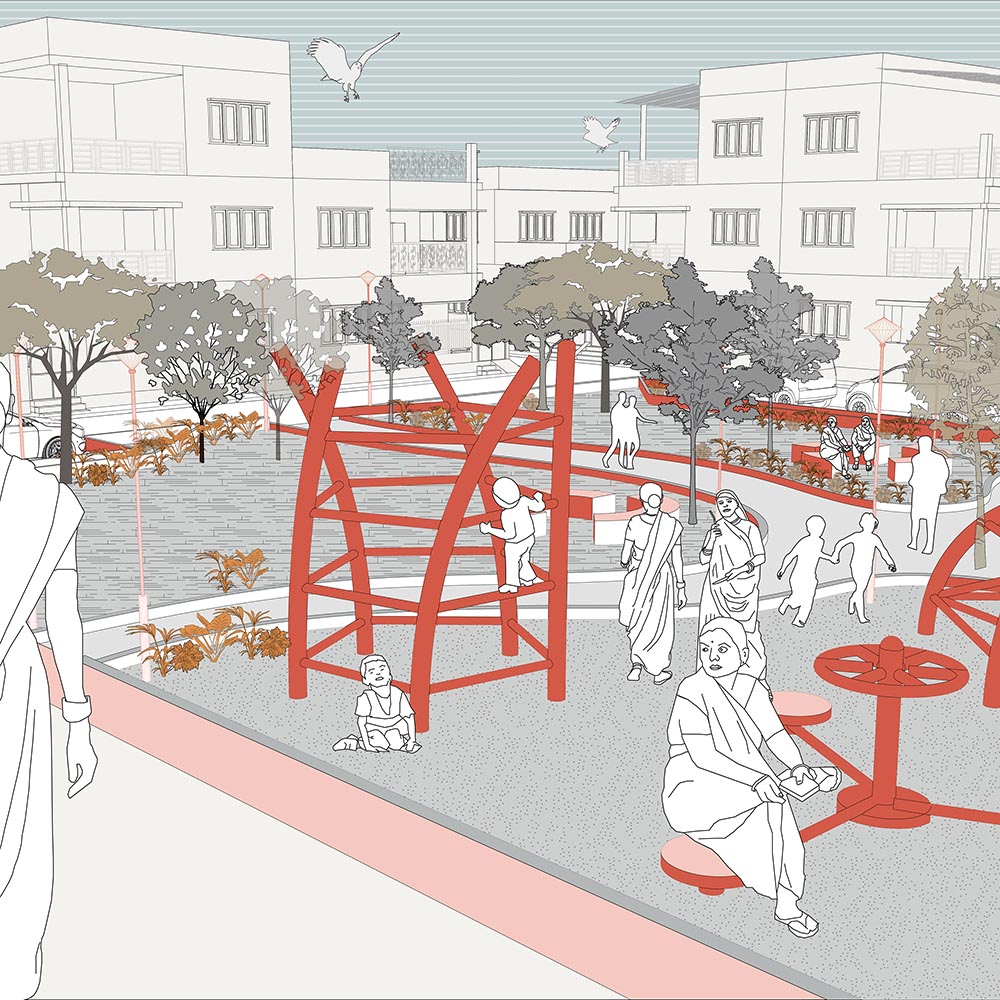
The project first analyzed the neighborhood pockets at city and sector level. There are a total of 538 pockets (ranging from 720 sq.mt – 5060 sq.mt) in Gandhinagar city and 64 in sector 4 itself (amounting to 63,276 sq.mt of area). Currently, these pockets are used inefficiently and most have unorganized parking or scattered social infrastructures. Further, because of the neglect, the spaces also become breeding grounds for dumping waste or construction debris. However, there were also instances studied and interviews conducted that were worth incorporating. These instances included: need for organized parking, food gardens, better play areas or larger ecological concerns.

In-depth analysis of selected pockets
Few pockets in Sector-4 were mapped and documented to understand existing usages. It was derived that majority of the land was undefined with no particular use while the periphery of these spaces was used for parking.

To do so, the design provides two modes of development:
- Pre- defined design options. These are pre-made designs aligned to larger ecological concerns typically addressing one program. These include spaces such as retention ponds, pollinator gardens, carbon sequestration forests, orchard pockets, etc
- DIY Design: For this a kit of parts is developed. The kit includes various inserts for cultivation, play, community activities, and water collection. It develops a dynamic app whereby the community can collectively choose from a range (up to 60% of the land area). Once the choices are made, the city designer will convert the selected elements into a spatial design with trails, lights, utilities with consideration of existing trees. These designs will then be implemented on the site.

At the sector scale, commercial zones are identified which will serve as manufacturing labs and selling units for the commodities required to build infrastructure for the pockets. Waste materials from tree plantations will be collected and transported to the labs for manufacturing of various raw materials. This will generate a cyclic loop of collection, production and selling along with increased employment opportunities in the sector.

For the pre- defined pockets a set of options has been designed which cater to ecological and social benefits. The ecological pockets will witness seasonal changes and have varied uses based on the changed landscapes.

To develop the pocket through the DIY mechanism, a kit of parts has been developed which has social and productive inserts like playgrounds, open gym, seating spaces, community kitchen, community fair, allotment garden, composting and ecological inserts. The scale of these interventions is small to accommodate into the available pocket area.

A manual has been created to guide the community for developing their pocket. The guide gives stepwise options for selecting various things required. For the kit of parts, a certain number of items can be chosen which simultaneously keeps reflecting in their pocket, indicating the area that has been utilized. 60% of the pocket is designed through kit of parts and 40% is already demarcated for trails, light poles, utilities, and existing trees.

The design includes more of social activities with ample undefined space which can be used for varied purposed by the community.


To conclude the “Pockets of Productivity” lends a bottom-up approach of design. It will create dynamic and diverse spaces that add ecological, productive, and social value to the neighborhood.



